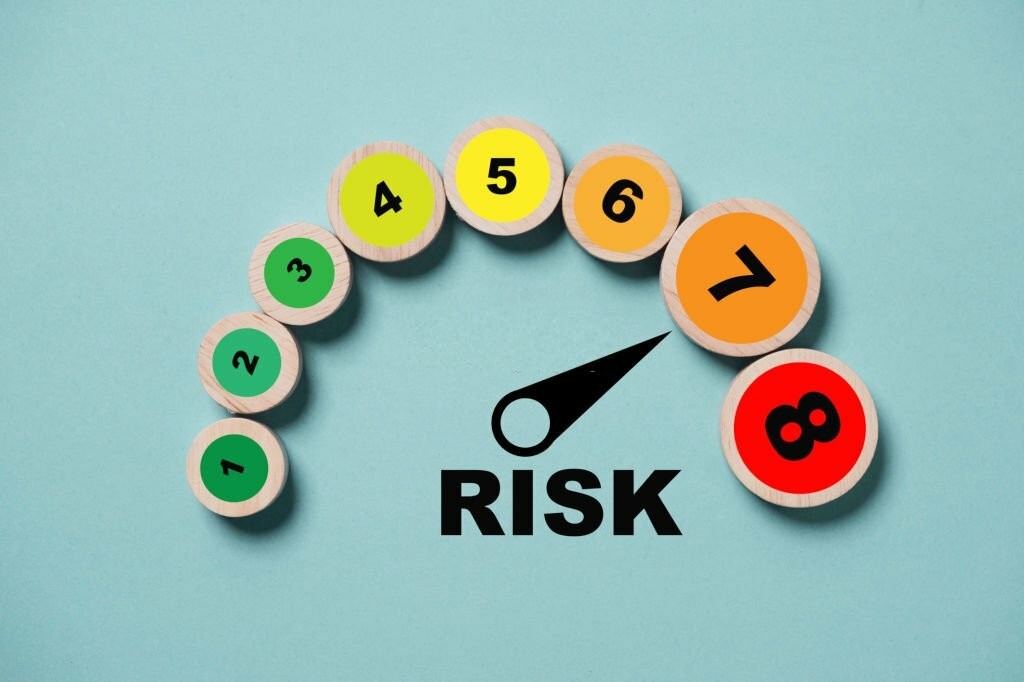In today’s rapidly evolving digital landscape, the importance of cybersecurity cannot be overstated. Businesses, organizations, and individuals are continuously exposed to a wide range of cyber threats. These threats can come in the form of data breaches, cyberattacks, and various other security risks. To protect against these threats, one of the most critical steps an organization can take is to perform a cybersecurity risk assessment. In this comprehensive guide, we will delve into the intricacies of Cyber Security risk assessment, with a focus on cybersecurity. We will cover the basics, the methodologies, and the importance of conducting a thorough risk assessment.
So, why is this article worth your time?
Cyber Security risk assessment is a subject that affects virtually everyone in the modern world. Whether you’re a business owner, an IT professional, or an individual concerned about your online safety, understanding the process of cybersecurity risk assessment is crucial. It’s the foundation upon which robust security measures are built, ensuring that you can protect your digital assets, and sensitive data, and maintain the trust of your clients and partners. This article will provide you with the knowledge and tools you need to navigate the complex world of cybersecurity risk assessment, enabling you to make informed decisions about your security posture.

Table of Contents
- So, why is this article worth your time?
- 1. Understanding Risk Assessment
- 2. Cyber Security Risk Assessment Frameworks
- 3. Incident Response Planning
- 4. Cyber Security risk assessment Identifying Vulnerabilities
- 5. Evaluating Cyber Attacks
- 6. Compliance and Risk Assessment
- 7. Managing Cyber Security risk assessment
- 8. Conducting a Cyber Security Risk Assessment
- 9. Understanding Risk Assessment Impact
- 10. Taking Action: Steps to Secure Your Digital Assets
- Conclusion:
- FAQs
1. Understanding Risk Assessment
What is Risk Assessment?
Risk assessment, in the context of cybersecurity, is the process of identifying, evaluating, and prioritizing potential security risks and vulnerabilities that could compromise the confidentiality, integrity, and availability of an organization’s information and data. It is a proactive approach to understanding the potential threats and vulnerabilities an organization faces in the digital realm.
Why is Risk Assessment Essential for Cybersecurity?
Cyber threats are constantly evolving, and the consequences of a security breach can be severe, including data breaches, financial losses, and damage to an organization’s reputation. Conducting a risk assessment allows organizations to understand their specific vulnerabilities and the potential impact of various cyber threats. This knowledge is crucial for making informed decisions regarding security measures and risk mitigation.
The Five Steps of a Cyber Security Risk Assessment
Performing a cybersecurity risk assessment involves a structured process typically consisting of five steps:
- Identify Information Assets: Determine what information and data are most critical to your organization. This includes sensitive customer data, intellectual property, financial information, and more.
- Identify Cyber Threats: Recognize potential threats to your information assets, including cybercriminals, malicious actors, and other threat agents.
- Assess Vulnerabilities: Evaluate the weaknesses and vulnerabilities in your security posture that could be exploited by these threats.
- Determine Likelihood and Impact: Assess the likelihood of each threat occurring and the potential impact on your organization if it does.
- Risk Analysis and Mitigation: Analyze the results of the assessment to prioritize risks and develop a plan to mitigate them effectively.
2. Cyber Security Risk Assessment Frameworks
Exploring Frameworks for Risk Assessment
There are various established frameworks and methodologies available to conduct a cybersecurity risk assessment. These frameworks provide structured guidelines for identifying and managing risks effectively. One of the most well-known frameworks is NIST’s Risk Management Framework (RMF), which provides a comprehensive approach to managing risk in information systems.
GDPR and Its Implications for Risk Assessment
The General Data Protection Regulation (GDPR) has introduced strict requirements for organizations that process the personal data of European Union residents. GDPR emphasizes the need for strong data protection measures, making a robust risk assessment process crucial for compliance. Understanding GDPR and its implications for risk assessment is essential for organizations operating within the EU or handling EU residents’ data.
3. Incident Response Planning
The Importance of an Incident Response Plan
In the event of a cybersecurity incident, having a well-defined incident response plan is crucial. This plan outlines the steps to take when a security breach occurs, minimizing the damage and facilitating a swift recovery. An effective incident response plan is closely tied to the results of your risk assessment, as it dictates how to respond to the specific threats and vulnerabilities identified.
4. Cyber Security risk assessment Identifying Vulnerabilities
The Role of Vulnerability Assessment
Vulnerability assessment is a critical component of risk assessment. It involves scanning your network, systems, and applications for known vulnerabilities. This process helps you discover weak points in your security defenses that malicious actors could exploit. By identifying vulnerabilities, you can take steps to mitigate them, enhancing your overall security posture.
How to Mitigate Vulnerabilities Discovered in Risk Assessment
Once vulnerabilities are identified in the risk assessment process, the next step is to develop a mitigation plan. This may involve applying security patches, implementing security controls, or taking other measures to address the vulnerabilities and reduce the risk they pose.
5. Evaluating Cyber Attacks
Understanding Different Types of Cyber Attacks
Cyber attackers employ various methods to compromise security and access sensitive information. Understanding these different attack vectors, such as phishing, malware, and DDoS attacks, is essential for assessing and mitigating risks effectively.
How Risk Assessment Helps in Preparing for and Preventing Cyber Attacks
A thorough risk assessment provides valuable insights into the potential weaknesses that cyber attackers may exploit. By identifying these weaknesses in advance, organizations can take proactive steps to prevent cyber attacks or respond swiftly when they occur.

6. Compliance and Risk Assessment
The Crucial Connection Between Compliance and Risk Assessment
Compliance with industry regulations and standards is a legal and ethical requirement for many organizations. Risk assessment plays a pivotal role in achieving and maintaining compliance by identifying areas where an organization falls short and needs to take corrective action.
Achieving and Maintaining Compliance Through Risk Assessment
By aligning risk assessment with the specific requirements of relevant regulations and standards, organizations can ensure that their security measures are both effective and compliant. This is critical for building and maintaining trust with clients, partners, and regulatory authorities.
7. Managing Cyber Security risk assessment
Strategies to Manage and Mitigate Cyber Risks
After conducting a risk assessment, organizations need to take strategic steps to manage and mitigate identified risks. This includes implementing security measures, developing policies, and establishing a risk tolerance level.
Determining Your Risk Tolerance Level
Risk tolerance is an organization’s willingness to accept a certain level of risk. Understanding and defining your risk tolerance level is essential for making informed decisions about risk mitigation. It ensures that your security efforts align with your organization’s goals and objectives.
8. Conducting a Cyber Security Risk Assessment
A Detailed Walkthrough of the Process
This section provides a step-by-step guide to conducting a cyber security risk assessment. It covers the methodology, tools, and best practices for a comprehensive assessment.
Key Factors to Consider in Your Assessment
We’ll delve into the key factors to consider when conducting a risk assessment, including the scope of the assessment, data collection, analysis, and reporting. These considerations are crucial for a successful assessment.
9. Understanding Risk Assessment Impact
Evaluating the Potential Impact of a Cybersecurity Risk Assessment
The results of a risk assessment have a direct impact on an organization’s security posture and decision-making. Understanding how to evaluate and communicate the potential impact of the assessment’s findings is essential for driving change and improving security measures.
Communicating and Managing Risk Exposure
Risk exposure refers to the level of risk an organization is willing to accept. It is influenced by the findings of the risk assessment. Effectively communicating risk exposure to stakeholders and decision-makers is a key step in the risk management process.
10. Taking Action: Steps to Secure Your Digital Assets
Implementing Security Measures
This section guides on implementing security measures to address the vulnerabilities and threats identified in your risk assessment. It includes examples of technical controls and security efforts that can enhance your security posture.
The Role of Security Policies and Controls
Security policies and controls are essential for maintaining a consistent and effective security posture. This section explores the creation and implementation of security policies and the selection of security controls based on risk assessment findings.
Cybersecurity Risk Assessment in the Context of Business Operations
Understanding how risk assessment aligns with your organization’s business objectives and operations is essential for maintaining security as a core component of your overall strategy. This section emphasizes the integration of risk assessment into daily business activities.
Conclusion:
In conclusion, cybersecurity risk assessment is a proactive and essential process for any organization, regardless of its size or industry. By understanding the potential risks and vulnerabilities that could compromise your security, you can take the necessary steps to protect your digital assets and maintain the trust of your stakeholders. Stay informed, stay secure, and make risk assessment a cornerstone of your cybersecurity strategy.

FAQs
Yes, there are various frameworks and methodologies, such as NIST’s Risk Management Framework, that provide structured guidelines for conducting risk assessments.
The findings of a risk assessment can influence the development of an incident response plan, as it helps organizations understand potential threats and vulnerabilities and prepare for effective responses.
Vulnerabilities are weaknesses in an organization’s security defenses. In a risk assessment, vulnerabilities are identified, and a plan is developed to mitigate them, reducing the associated risks.
By identifying potential weaknesses that cyber attackers may exploit, organizations can proactively take steps to strengthen their security measures and minimize the risk of cyberattacks.
